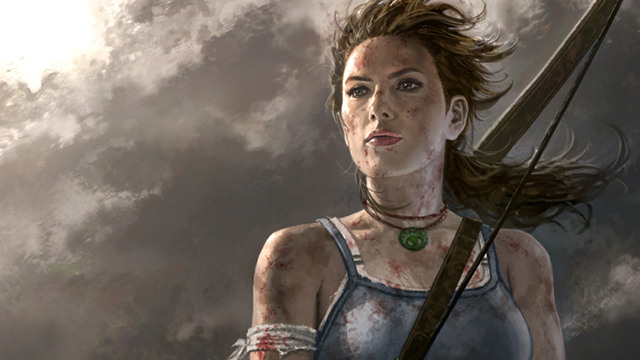Have you ever paused mid-game, perhaps while navigating a sprawling open world or strategising your next move in an intense online battle, and thought about how far we’ve truly come? It’s mind-boggling, isn’t it? From the simple flickering pixels of yesteryear to the breathtakingly immersive experiences we enjoy today, gaming has undergone an incredible metamorphosis.
It’s more than just better visuals; it’s a complete revolution in how we interact, explore, and even tell stories. So, buckle up, because we’re about to take a nostalgic yet forward-looking journey through the fascinating evolution of gaming. We’ll delve into how game mechanics have become incredibly sophisticated, marvel at the jaw-dropping advancements in graphics, trace the ever-shifting landscape of genres, and even peek into the exciting possibilities that the future holds.
How the Mechanics Have Evolved
Cast your mind back. Do you remember the sheer thrill of Pong? Two paddles, a bouncing square, and a single goal: don’t miss. Or perhaps Space Invaders, where your only command was left, right, and fire. Simple, elegant, and utterly addictive. These early games laid the foundational bricks of what we now know as game mechanics – the rules, systems, and interactions that govern gameplay.
From those humble beginnings, mechanics have blossomed into intricate ecosystems. What started as basic movement and score-keeping has exploded into complex skill trees, resource management systems, physics engines that simulate real-world interactions, and emergent gameplay where your actions genuinely shape the world around you. Think about the strategic depth of real-time strategy games like StarCraft, where micromanagement and macro-level planning are equally crucial. Or consider the narrative choices in an RPG like The Witcher 3, where your decisions ripple through the story, affecting characters and outcomes hours later.
Even in areas you might not immediately think of as “traditional” video games, mechanical innovation is rampant. Take online slots, for example. What used to be a static set of reels has evolved dramatically. Modern iterations now feature incredibly dynamic mechanics. If you’ve ever explored a guide to the best Megaways slots and their features, you’ll have seen how these games have revolutionized the format. Instead of fixed paylines, Megaways titles boast an ever-changing number of symbols on each reel with every spin, generating thousands, sometimes hundreds of thousands, of potential ways to win! This mechanic exemplifies how designers are constantly seeking to inject more variety, unpredictability, and strategic depth into even the most established game types, keeping players on their toes and providing immense replayability.
This mechanical evolution isn’t just about complexity; it’s about engagement. It’s about giving you more control, more choices, and more meaningful ways to interact with the digital world.
Key Mechanical Innovations
Emergent Gameplay: Actions have unforeseen, wide-ranging consequences.
Dynamic Environments: Worlds that react and change based on player interaction.
Procedural Generation: Unique levels, items, or quests created on the fly.
Advanced Physics Engines: Realistic object interaction, destruction, and movement.
Deep Customization Systems: Tailoring characters, equipment, and even game rules.
How Graphics Have Evolved
Now, let’s talk about something incredibly visible: the mind-blowing leap in graphics. If you started gaming in the 8-bit era, you probably remember that your imagination did a lot of the heavy lifting. A few blocky pixels could represent a heroic plumber, a menacing ghost, or a speeding race car. We knew what they were because our brains filled in the gaps.
Then came the stunning 16-bit era, bringing us more detailed sprites and vibrant colors that made games like The Legend of Zelda: A Link to the Past feel like interactive cartoons. But the real game-changer? The leap into the third dimension. When the PlayStation and Nintendo 64 hit the scene, suddenly, you weren’t just moving a character across a flat plane; you were exploring worlds with depth and perspective. Sure, those early 3D graphics were often jagged and blurry, but they opened up an entirely new realm of possibilities.
Fast forward through the smooth textures and increasingly detailed character models of the PlayStation 2 and Xbox era, and you arrive at today’s graphical masterpieces. We’re talking photorealism, ray tracing that simulates light like never before, incredibly detailed facial animations that convey genuine emotion, and environments so rich they feel like places you could walk right into. Games like Red Dead Redemption 2 or Cyberpunk 2077 push boundaries, blurring the line between digital art and reality. This evolution isn’t just about looking pretty; it’s about deeper immersion, more believable characters, and a richer storytelling canvas.
Visual Milestones in Gaming
Pixel Art (1970s-1980s): The foundational visual language.
Sprite-Based Graphics (1980s-1990s): Increased detail, color palettes, and animation frames.
Early 3D Polygon Graphics (Mid-1990s): The shift to three-dimensional worlds.
Texturing & Lighting Advances (Late 1990s-2000s): More realistic surfaces and atmosphere.
High-Definition & Photorealism (2000s-Present): Ultra-detailed models, advanced lighting, and environmental effects.
Ray Tracing & Global Illumination (Present): Hyper-realistic light physics and reflections.
How Genres Have Evolved & Adapted?
Remember when games neatly fit into distinct boxes? You had your platformers, your shooters, your RPGs, and your adventure games. While those categories still exist, the lines between them have deliciously blurred over the years. This blending of genres has given birth to an incredible array of fresh experiences, proving that innovation often comes from combining familiar ingredients in new ways.
Think about how many action games now feature robust RPG elements – character progression, skill trees, and loot systems are commonplace in titles that would traditionally just be about shooting or jumping. Survival games often incorporate crafting, base-building, and exploration, themselves pulling from simulation and adventure genres.
And then there are the entirely new genres that have burst onto the scene.
Battle Royale: A phenomenon pioneered by games like PUBG and Fortnite, dropping dozens of players onto an island with one simple goal: be the last one standing.
Mobas (Multiplayer Online Battle Arenas): Games like League of Legends and Dota 2 have cultivated massive competitive scenes, blending real-time strategy with RPG-like hero progression.
Rogue-likes/Rogue-lites: Characterized by procedural generation, permanent death (or significant penalties), and a focus on replayability, these games (e.g., Hades, Dead Cells) offer endless, challenging runs.
Gaming has also adapted to become more social and competitive. The rise of online multiplayer and esports has transformed gaming from a solitary pastime into a global spectator sport, complete with professional players, dedicated teams, and massive prize pools. The indie game scene, too, has played a crucial role, allowing smaller developers to experiment with unique concepts and niche genres that might not appeal to mainstream publishers, enriching the overall gaming landscape immeasurably.
Examples of Genre Evolution & Blending
Action-RPGs: Diablo, Mass Effect, God of War (2018).
Survival-Crafting: Minecraft, Subnautica, Ark: Survival Evolved.
Rogue-like Metroidvanias: Dead Cells, Hades.
Immersive Sims: Deus Ex, Dishonored (blending RPG, stealth, and action).
Narrative-Driven Walking Sims: Gone Home, Firewatch (focus on environmental storytelling).
What the Future Holds?
If the past few decades are any indication, the future of gaming is going to be nothing short of spectacular. We’re already seeing exciting technologies on the horizon, promising to redefine how we play and interact with digital worlds.
Cloud gaming services like Xbox Game Pass Ultimate and PlayStation Plus Premium are making high-end gaming more accessible than ever, freeing you from the need for expensive hardware and letting you play demanding titles on almost any screen.
Virtual Reality (VR) and Augmented Reality (AR) are still in their early stages, but they hold immense potential. Imagine fully immersing yourself in a fantasy world with VR or having game elements overlaid onto your real-world environment with AR. These technologies promise unparalleled levels of presence and interaction, blurring the line between the game and your reality.
Artificial Intelligence (AI) will continue to advance, leading to more dynamic and believable NPCs, adaptive difficulty, and even procedurally generated stories that respond uniquely to your actions. We might see AI game masters that craft bespoke adventures just for you. Beyond entertainment, gaming concepts are increasingly being applied in education, training, and even healthcare through “gamification.”
And who knows? Perhaps in the distant future, we’ll see advancements in haptic feedback that truly let you feel the game world, or even direct brain-computer interfaces that allow for intuitive controls beyond anything we can imagine today.
A Never-Ending Quest
From the simple joy of Pong to the intricate narratives and breathtaking vistas of today’s blockbusters, gaming has been on an incredible journey. It’s transformed from a niche hobby into a global cultural phenomenon, constantly pushing the boundaries of technology, art, and storytelling.
You’ve witnessed, and been a part of, this astonishing evolution. And the best part? The game is far from over. The next level is always just around the corner, promising new mechanics, stunning visuals, and unforgettable experiences. So, here’s to the past, the present, and the wonderfully unpredictable future of gaming.











![[Rumor] Capcom is reportedly working on a new Dead Rising](https://vgleaks.com/wp-content/uploads/2025/12/capcom-logo-150x150.jpg)

